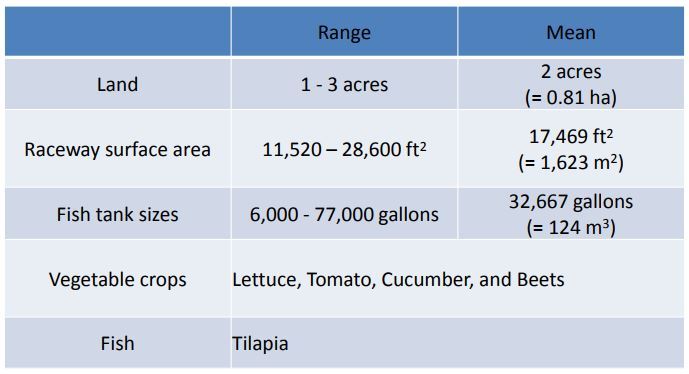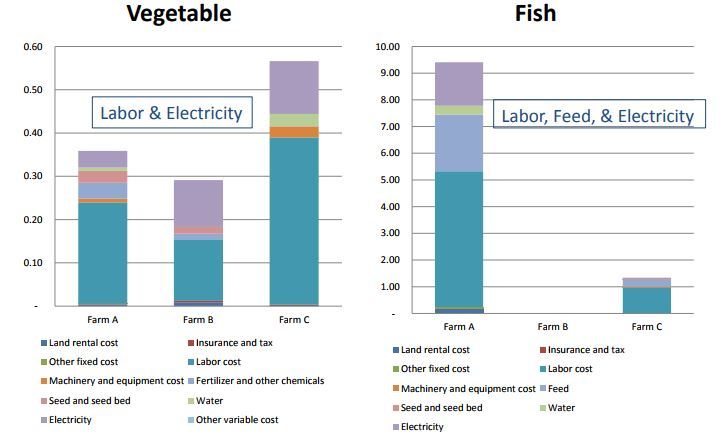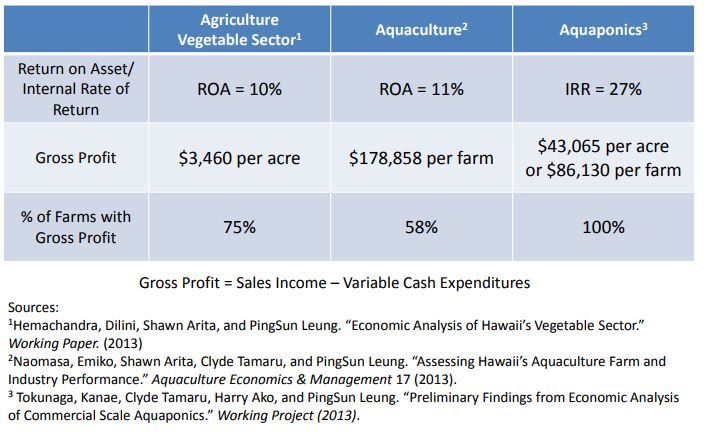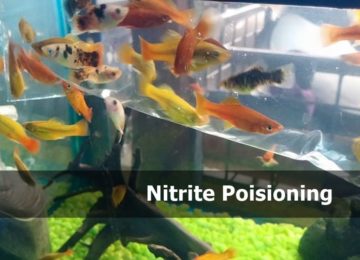Aquaponics is a blend of hydroponics (growing plants in water) and aquaculture (raising fish). This is a new and “innovative” idea, although has been around for centuries. It is resurfacing in our modern world and attracting many people.
In 2012, Industry ARC reported, “Aquaponics as an industry has a potential market size of around $180m in 2013 and this is expected to cross $1bn in sales by 2020.”
Table of Contents
And one of the bigger concerns is also rising with a rise in popularity. Whether or not Aquaponics will ever be profitable enough to support a family?
This is one of the most common question asked by whoever first listen to aquaponics. Although it is better than conventional agriculture in many ways, it is not a viable venture for most growers if it’s not financially feasible.
According to Chicago Tribune, next wave of ecopreneurs hopes to find the key to making aquaponics profitable. As it offers attractive non-monetary benefits and it can avoid agricultural hazards such as tornadoes, storms, flooding, and droughts.
Before we proceed further, we need to position our purpose and scalability. The financial expectations vary greatly among the growers. Some are just trying to break even and plan to operate on a nonprofit basis. Others are forecasting significant returns with a large-scale agricultural business As a first step, it is crucial to identify your goals when evaluating profitability. On scalability, aquaponics can be divided into three categories
- Commercial Aquaponics
- Backyard/DIY Aquaponics
- Small Goldfish/Betta Aquaponics Tanks
We will just discuss Commerical Aquaponics here!
Is commercial scale aquaponics economically feasible?
In the case of a backyard System, you may be doing it as a hobby or to support the family or maybe just to bring some tomatoes and salad on the table for dinner.
But on the commercial scale, the aquaponics farm is supposed to raise capital and profitable.
To evaluate the economic backbone of aquaponic farms, we need to dive in:
- Capital/Investment cost (building the system, setup the operation logistics, etc.)
- Operational cost
- Profitability of the operation

Aquaponics is profitable when it is done to a specific scale.
Investment cost is relatively high which is the main drawback of aquaponics.
In operational cost, more electricity is used as compared to traditional aquaponics. However, labor cost including plowing and pests is reduced. Water is conserved which is the main consumption in traditional agriculture. Recurring expenditures, on the whole, are lower as compared to traditional agriculture.
According to CTAHR University of Hawaii, Hawaii is at the forefront of commercial-scale aquaponics in the world. 3 farms on Oahu. All are Food safety certified. 2 of 3 are organically certified.
Moreover, every operation is different in terms of system design, species selection, and scale. No one can make definitive claims about the profitability of aquaponics without researching the demographics of the local market and specifications of that particular aquaponics greenhouse.
Here are some statistics of study on aquaponics farms to give you an idea
Overview of the Aquaponics Farms

A 2014 study from Johns Hopkins University surveyed 257 commercial aquaponics growers located in the US. It concluded their operational metrics and financial success. Some of the key findings:
- The average size of the operations is .03 acres (1,307 sq. ft.). About 40% of operations are backyard/home-based; the others were on commercial or agricultural land.
- Although Most growers used a combination of 2 or more aquaponics systems (media, wicking beds, rafts, NFT, and vertical towers), the rafts and media beds were the most common.
- Only 31% of growers were profitable.
- The 55% forecasted to be profitable within the next 12 months and 75% aimed to be profitable in the next 36 months.
- The commercial aquaponics operation was not the primary source of income for 70% of owners.
- Not a single farm was able to make fish production profitable.
- Is fish merely a nutrient source for the plant? Or, can fish be a profitable enterprise of the system? Nevertheless, the Fish growth rate has to improve for the fish enterprise to yield the profit.
Total Investment Cost

The labor and materials needed to build the system are the major cost components. You will need a lot of money to build just a greenhouse.
Any commercial setup can be significantly more expensive and will require at least an acre.
A hydroponic greenhouse can be even more expensive because of some factors. You will need a large concentration of water-mixed nutrients to feed the plants, and power to pump that water, run the fans and sensors.
Operational Cost per $1 of Sales

Economic Performance Comparison of Aquaponics with Aquaculture and agriculture

As the above data indicates, commercial aquaponics is not a safe bet or an assuredly profitable industry as only about 1/3 of operations are profitable. Some key points we have to consider about the study:
- The study did not consider the intention/goals of growers. As the majority of growers do not make aquaponics their primary profession, we can deduce that the survey includes some commercial growers who probably don’t need or want to make significant profits.
- Most operations are still in the initial phase, with an average time in the business of about 4 years at the time of the study.
If we evaluate only those who made a living from their commercial aquaponics greenhouse, Profitability statistics would likely change.
Sources of revenue: How do Aquaponics Farms make money?
Apart from fascinating saving, recycling and conserving, Everyone wants to know about how the ways to earn from the aquaponics yield. Let’s dive in to find the different ways in which aquaponics farms making money.
This is important as it shows you different methods that might be suitable to your current or future strategy.
The main ways include:
- Selling Plants
- Aquaponics Classes
- Selling Fish
- Selling System
There may be other methods but these are the most common ones.
Like any business, you need experience or need to involve someone who has the business acumen to successfully run a commercial aquaponics. Being a hobby grower and getting excited by the coolness of aquaponics does not guarantee success, hard-headed business decisions based on experience and knowledge do. A lot of beginners with no business experience see their vegetable growing and fish eating, but don’t realize they’re slowly pushing the money down the drain.
How to make Aquaponics more Profitable
Grow the plants that are costlier in your region to counterbalance the expenses of energy and resources. You need to do proper research on the seasonal prices in the area you’re going to build your system. You can yield profit from tomatoes and specialty crops like yellow peppers and basil and other herbs that support such a greenhouse. But you have some limitation as you cannot grow any grain crops, like wheat and corn, better suited for an open field.
You can grow more food in less space as plants need less space while growing very close to each other in Aquaponics/hydroponic greenhouses.
Other recommendations related to the fish in aquaponics are
- Raise edible fish instead of goldfish/koi
- Take into consideration the fish to food ratio
- Best fish to raise in aquaponics is the native and local one which will do well with the climatic conditions and each other
The combination of high-priced plants and more food in a smaller area help soothe the pain from the initial cost of the greenhouse with the potential for higher profit. Unfortunately, the cost isn’t the only concern for farmers.
Aquaponics is for city dwellers who want to:
- Eat fresh organic food
- Buy locally produced goods
- Start a business
- Enjoy food security that doesn’t require stockpiling canned green beans
- Contribute to community improvement
- Benefit from working with plants
- Inspire future generations
Does your Aquaponics system support you or/and your family?
I am actually really curious to know whether any of the Leaffin Troops are supporting a family (or even just themselves) with their systems. What kind of benefits you’re getting? How long did it take you to get it to this position? Do you have any advice for someone who is just starting out?
Please leave a comment. Your insights might really help someone.

